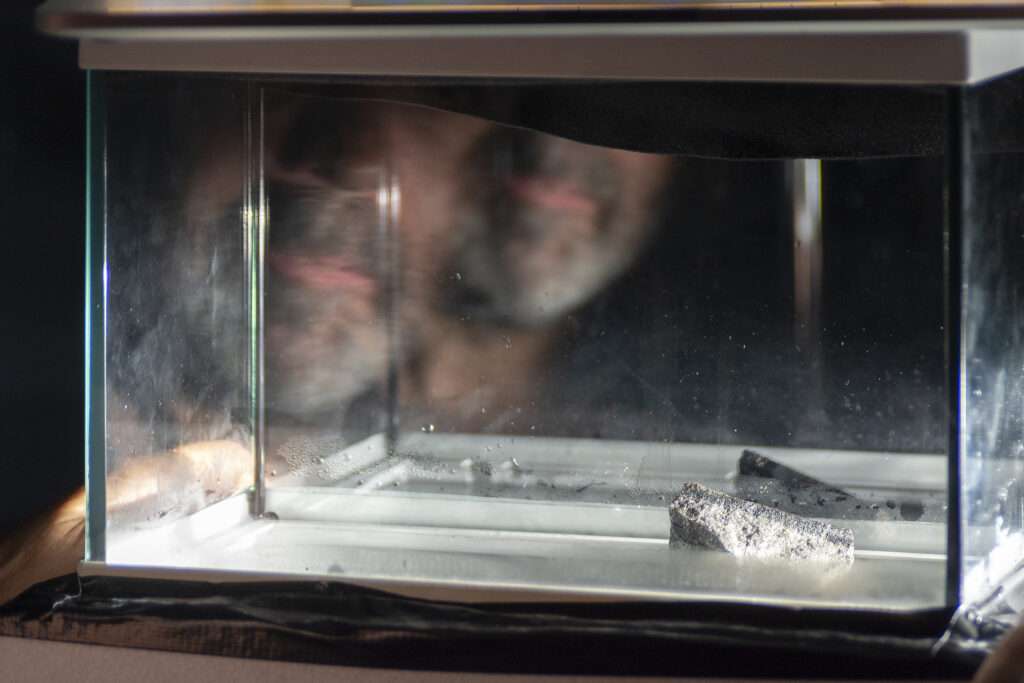- H2 HEADER FOR FIRST LEVEL TITLES
With capslock, centred.
H3 HEADER FOR SECOND LEVEL TITLES
With capslock, centred.
H4 header for third level titles
Align left.
REFERENCES AND NOTES
References and notes are compiled into one single list, which is appended at the end of the publication page, headed as REFERENCES AND NOTES. Use the H2 header.
In-line format:
- Note (1) and reference (2) in brackets, like this.
- With quotes, “like this” (3) if the sentence continues after. the quote.
- “And like this, if the quote includes a full sentence.” (4)
How to create in-text links for each reference
Each number in brackets must include an anchor link to the corresponding reference. For example, reference (1) includes a link named #1, and the corresponding reference includes an anchor named 1.
To create that anchor, select 1. (or anything in that block). On the right of your WP editor, at the bottom of the block settings, click on “Advanced”.
Type the number of your reference/ note (1, in this case) in the HTML Anchor box. This will become your anchor.
More: https://wordpress.com/support/page-jumps/
End list format:
1. Each reference and note must have its own “block”, because anchors apply to blocks.
2. Note that numbers appear bold.
4. Book.
5. Etcetera.
Important:
-
- All sources cited in the text must be referenced.
-
- It is the author’s responsibility to include accurate, complete and properly formatted citations.
-
- Embed hyperlinks in the the publication titles.
-
- Each reference number should appear ONLY ONCE in the text. Subsequent references to the same source should have a new number and refer back to the initial reference.
Example:
8. See Jones (2023) p. 43.
- Each reference number should appear ONLY ONCE in the text. Subsequent references to the same source should have a new number and refer back to the initial reference.
Include page numbers of quotes.
BOOKS
Author, Title of Book (place of publication: short form of publisher’s name, date) page numbers. Include name of editor or translator, edition, date of original publication and any other pertinent information. Include page numbers of quotes.
Example
- Jonathan Smith, Visual and Plastic Arts (London: John Doe Press, 1976) p. 5.
Alternative listings
- If editor credit only—no author:
Joe Jones, ed., Visual and Plastic Arts (London: John Doe Press, 1976) p. 5. - If no publisher available (City: date):
Joe Jones, ed., Visual and Plastic Arts (London: 1976) p. 5. - If no city available (Publisher, date):
Joe Jones, ed., Visual and Plastic Arts (John Doe Press, 1976) p. 5.
BOOK CHAPTERS
- Julie Anderson, “Art Now”, in Art Forever (New York: Albany Univ. Press, 1988) pp. 17-29.
ARTICLES AND CONFERENCE PAPERS
Journal articles and conference papers are treated in a similar way:
- Author, “Title of Conference Paper”, Name of Conference, pages (Year).
- Author, “Title of Article”, Name of Journal Volume Number, Issue Number, pages (Publisher, year).
If no publisher:
- Author, “Title of Article”, Name of Journal Volume Number, Issue Number, pages ( year).
Examples:
- John Smith, “This is Music”, Liveness 59, No.3, pp. 18-32 (2014).
- Joanna Star, “Beyond the. Human”, Proceedings of. That Conference, pp. 8-16 (2018)
PERFORMANCES
- Ron Nachmann, Editorial Dance of Woe, ISAST Theater, San Francisco, California, 1998.
NOTES
Example:
The priming layers on these paintings were made with similar combinations of zinc and lead white, with a small amount of calcium-containing filler.
ONLINE REFERENCES
Include the URL in angle brackets <> and provide the access date in brackets ().
Examples:
-
- Kadhim Shubber, “This German artist is training geese to fly to the moon”, Wired.UK, 9 September 2013, <www.wired.co.uk/news/archive>, accessed 1 July 2023.
-
- This experiment is described at <we-make-money-not-art.com/amb-working.php#.Uwe0XPRdUj2>, accessed 2 July 2023..
MEDIA AND CAPTIONS
Media contents (sounds, images, videos, code, etc.) must be referenced in the text, and placed immediately bellow the paragraph where the reference appears. Authorship and ownership are credited in the captions. Online contents with no copyright should include links to the URL sources.
CREDITS & COPYRIGHTS
Third-party materials must be properly credited in the caption. Authors are responsible for requesting copyright permissions. If the person granting permission specifies particular wording, those instructions must be followed. However, the editor may make minor changes to conform to the journal’s style. Some works have more than one source and each must be cited.
IMAGES
Upload images by choosing the “Image” block. Include descriptive captions. All must be referenced in the text, like this (Fig. 1).

AUDIO
Upload sound files by choosing the “Audio” block. Include descriptive captions. Credit authorship and ownership. All must be referenced in the text, like (Audio 1).
VIDEOS
Upload videos by choosing the “Video” block. Include descriptive captions. Credit authorship and ownership. All videos must be referenced in the text, like this (Video 1).
CODE ELEMENTS
Embedding shared HTML
It is possible to insert html code directly in the article simply by copying the code that platforms make available through options such as *share* or *embed* and pasting it in the WP content editor.
Code text
Use the “Preformatted” block to display code, as shown in this example extracted from the markdown system developed by ESMAE:
<iframe style="width: 300px; height: 100px; margin: 0 auto 2rem; display: block; border: 0px" src="conversor.html"></iframe>
Introducing external elements with *iframe*
External elements can be introduced through the “custom HTML” block. The drag&drop code above appears as follows:
ACKNOWLEDGMENTS
Ackowledgments are optional. Additional contributors and grants may be acknowledged.
